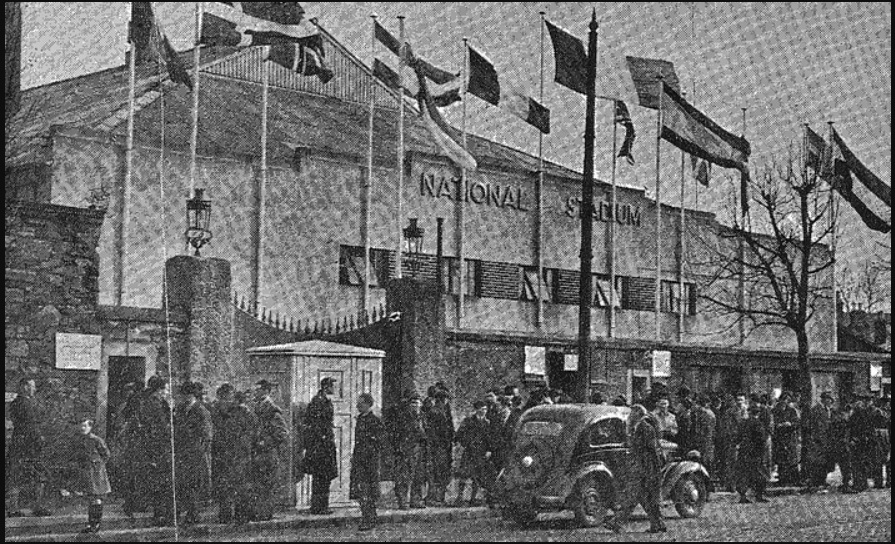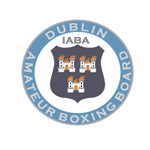The National Stadium

During the early 1930s, it had become increasingly obvious that the absence of a suitable venue was a serious impediment to the staging of a greater variety of International events in Dublin. In 1935, the IABA took the lead in organising a meeting of sports associations to investigate the feasibility of building a National sports Stadium. While support in principle was given by other associations, none was prepared to undertake the financial commitment involved. In spite of this lack of financial support, the IABA officials at that time determined to undertake the project and on 12th June 1935 the Central Council, under the presidency of Maj General W R E Murphy, formally approved the decision to proceed with the erection of a new stadium. A Board of Trustees was formed, comprising Major General W R E Murphy, President, IABA Mr Frank Aiken, Minister for Finance Mr Alfred Jones, Architect Mr Stephen Kelly, Architect Mr Nial McLaughlin, brother of Fr McLaughlin General D McKenna. The problem of raising the necessary finance was overcome by the willingness of these individuals to underwrite and guarantee the funding required. Of particular interest was the significant fundraising efforts undertaken by wives of the trustees at the time. One of those who was extraordinarily successful in this regard was Mrs Murphy, wife of Major General Murphy. In the years leading up to the construction of the Stadium, she raised a sum of £3,000, mainly through the organisation of carnivals and garden parties. That was an incredible sum when one considers that the total cost of erecting the Stadium was £13,000. Mrs Murphy was quoted as saying “The Association is pledged to building the Stadium and it must be built, because, after all that has been done, we cannot afford to fail in this task”. The Stadium opened for the national Championships in 1939 and later in that year, was the venue for the European Senior Championships. The public generally are now inclined to accept the Stadium as just an institution and fail to appreciate the reality that it was a fantastic achievement. No other Association in the world would have ventured on the colossal expenditure of £13,000 without a penny of State or Municipal help. The Stadium must always remain a monument to the enterprise and hard work of those who controlled the Irish Amateur Boxing Association in pre-war years. In the 75 years since that momentous decision to proceed with the Stadium construction, three generations of the same family have continued to maintain a close association, not only with the Stadium, but with the administration of Amateur Boxing. Mr Alfred Jones of Jones & Kelly, Architects, Dun Laoghaire, was one of the original trustees whose unselfish dedication drove the project to completion. In fact, Jones & Kelly were responsible for the original design and gave their professional services free of charge. Alfred’s son, Felix, also became a Trustee and continued garden parties. in that position for many years. Felix was also President
 Alfred Jones Senior
Alfred Jones Senior  Felix Jones
Felix Jones
of the IABA and was a highly respected and popular member of EABA and AIBA, the European and World ruling bodies, respectively. During Felix’s years as Chairman of the Trustees, it is probably fair to say that he took an almost propriety interest in the Stadium. More than anybody, he was acutely aware of its historical significance. Felix’s determination to provide a permanent income stream towards the upkeep of the premises resulted in the conversion of what was then the gymnasium into what is now known as The Ringside Club. When the army vacated Griffith Barracks, Felix and Dermot Sherlock were instrumental in negotiating and securing title to the gunroom, which has since been converted to the High Performance Training Centre. The Jones family connection with the Stadium was maintained when, some years ago, funding was made available for a major upgrade to the premises. Alfred Jones, Felix’s son, was the architect who designed the impressive new entrance lobby with overhead office accommodation
 Alfred Jones Junior
Alfred Jones Junior
Soldiers Field, Chicago – 1933
The first recorded Away International in which the Irish Amateur Boxing Association participated was in 1924 when an all-Army team travelled to Scotland. Since then, Irish teams have travelled to venues all over the world. Many of these have been memorable and live on in the memory of those lucky enough to have been involved. However, it is probable that no single International or Championship can compare to a tournament held in Soldiers Field, Chicago in 1933. For those of us who take for granted the convenience of modern travel, it is difficult to appreciate the logistical nightmare faced by officials in getting teams to foreign venues in the early days of International boxing. Sending an Irish Amateur Boxing team to Chicago in 1933 seems to have been a job that called for exceptional qualities of organisational ability, diplomacy and communication skills. Eight Irish Senior boxers travelled to oppose a USA team in the International Golden Gloves tournament. Paddy Hughes (Corinthians), Frankie Kerr (Arbour Hill), Ernie Smith (St Andrews), Jack Kennedy (St Andrews), Paddy Connolly (Collins Barracks/Army), Dick Hearns, Jerry Mulligan and Paddy Hennelly represented the Garda Club, based in the Phoenix Park. Jerry Curran, a freelance journalist, travelled with the Irish team and recounted what he referred to as “an unforgettable experience”. Bidden God speed by the Lord Mayor of Dublin, the team travelled to London on the first leg of their journey. From there they took a boat train to Southampton to board the Majestic, queen of the British Ocean Line. They became the centre of attraction during their 6-day trip as they worked out on deck and in the ship’s gymnasium. They were feted in New York from where they travelled to Chicago to be snowed under with civic receptions and general enthusiasm. Curran recalled that the 8 boys came through it all smiling and unaffected and completely intent on the main object “to put up a good show for the pride of Ireland”. What matter if they didn’t win? Forty-eight thousand people filled the huge amphitheatre of Soldiers Field. The crowd greeted each contest with thunderous applause. excited to shouting point by the show that the boys put up. Everybody knew they were suffering from the trying heat which touched 100 degrees, from the strange food and from the effect of the continual round of sightseeing. But nevertheless, the boys went in fighting and stayed fighting until the final gong. Their performances had 48,000 Chicagoans on their feet and roaring their heads off for the eight Irish boys. Pages could be filled with the story of those fights but perhaps the victory of Paddy Connolly over Lenny Cohen of the USA was the most noteworthy. Cohen was at that time Golden Gloves champion and was regarded as a world beater. He later became one of the leading professionals in the United States. Connolly, known as “Paddy the Great” was made an honorary member of the Sioux Indian Tribe and given the name “Big Chief Little Thunder”. Incidentally, the only other Irishman to have this honour bestowed on him was Mr Eamon De Valera, former President of Ireland.
 Ernie Smith
Ernie Smith  Jack Kennedy
Jack Kennedy

Chicago – 1933

